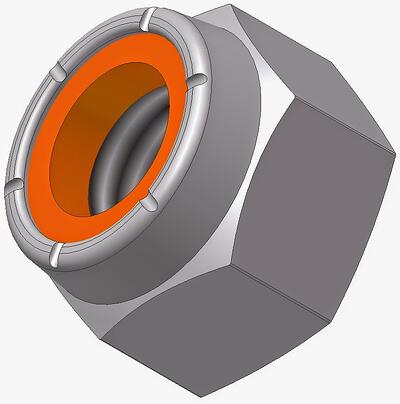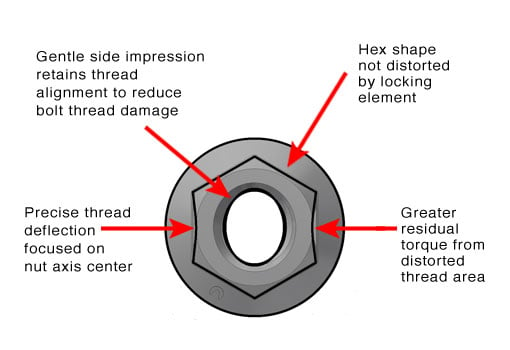Sometimes there is no standard locknut that will satisfy the requirements of an application. In these instances, a locknut fulfilling special requirements should be defined in a controlled document that specifies the characteristics listed in Part 1. That requirements document (an engineering drawing, for example) should reference standards for as many characteristics as possible. Then for those characteristics that have non-standard requirements, the limits and tolerances assigned to those characteristics should be evaluated by a locknut expert for feasibility and cost/benefit.
The requirements document should be referenced in any Request For Quote (RFQ) inquiring about the locknut.
While the standards are good examples of locknut specification, I have encountered a number of common bad locknut requirements specifications. I’ll try to explain what makes a specification good or bad. A good specification can be related directly to fit, form, or function in an application. Examples are
- Thread Start (Go Gauge) Minimum – Ensures that the locknut can be started in the assembly without cross threading. The thread deflection that creates the prevailing torque occasionally can impact the starting threads, so this is an important characteristic.
- Installation Torque Maximum – Limiting the installation torque allows an assembly drive tool to be selected that will accomplish the assembly.
- Removal Torque Minimum – Ensures that a minimum prevailing torque will be working to prevent dissassembly.
- Bearing Diameter Minimum and Countersink Diameter Maximum – Limit how small the bearing surface can be. The axial load stress and bearing surface friction both depend on a functional bearing surface area to make the assembly successful.
A bad locknut specification does not relate directly to fit, form, or function. I generally see bad specifications that attempt to relate a dimension to prevailing torque performance. The motivation is to replace an expensive, destructive performance test with a simple dimensional measurement. In theory, if it measures correctly, it will perform correctly. The problem is that prevailing torque performance is sensitive to several factors in combination, including some dimensions, and is more sensitive to some dimensions than others. Some bad locknut specifications are
- Minor Diameter at the Thread Deflection – this is sometimes specified with Go/NoGo pin gauges. The problem with this specification is that the action of the deflected threads is applied at the Pitch Diameter, not the Minor Diameter. The standard tolerance for the Minor Diameter can be large relative to how much the pitch diameter is deflected to achieve prevailing torque, and the pitch diameter is not tightly correlated to the Minor Diameter. From lot-to-lot, there will be some parts with acceptable prevailing torque that fail this inspection (false positives), and some parts with non-compliant torque that pass it (false negatives).
- “Crimp” Deflection – The standard tolerance for Width Across Flats can be large relative to how much the pitch diameter is deflected to achieve prevailing torque, and the pitch diameter is not tightly correlated to Width Across Flats. From lot-to-lot, there will be some parts with acceptable prevailing torque that fail this inspection (false positives), and some parts with non-compliant torque that pass it (false negatives).
Another class of bad locknut specification is performance characteristics without inspection methods. A good specification will define the inspection procedure and conditions, including
- drive speed and distance
- mating part (test bolt), including material, hardness, finish, and thread specification
- when to record measurements within the assembly and removal.
There are also bad specifications that put requirements on quantities that are not controllable, like coefficient of friction. If the specification includes material hardness and finish (including lubricant), the ability of the manufacturer to control coefficient of friction is severely restricted; you get what you get.
Finally, the way that deflected thread locknuts work (localized plastic deformation to an interference fit with sliding), the associated dimensional and material tolerances, and some variables like the proximity of the deflection to where the thread exits the locknut all play into common locknut behaviors
- Prevailing torque degrades (wears out) with installation/removal rotations
- There is significant variation (scatter) in prevailing torque from part to part
In light of this, using standard manufacturing processes and materials to produce deflected thread locknuts, it is not economically realistic to
- specify a minimum first removal torque that is more than 2.5 times higher than the standard first removal torque for the same size and material.
- specify a maximum installation torque that is smaller than 4 times the minimum first removal torque, as measured by the process and equipment described in ASME B18.16.6.
- These rule-of-thumb ratios get worse as the difference from standard prevailing torque increases (light torque or heavy torque).







